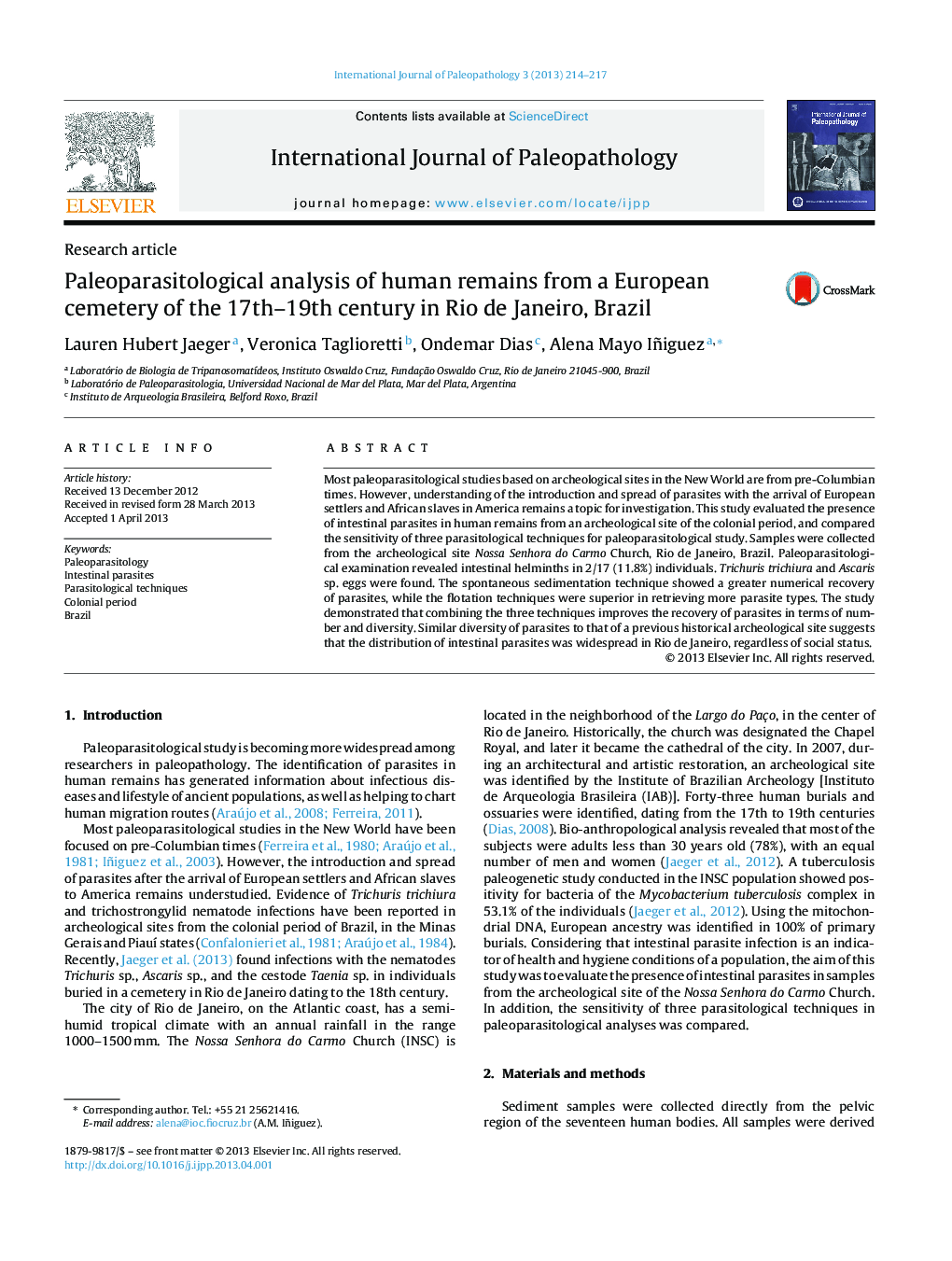| Article ID | Journal | Published Year | Pages | File Type |
|---|---|---|---|---|
| 101415 | International Journal of Paleopathology | 2013 | 4 Pages |
•Parasite infection was detected in individuals from the Brazilian colonial period.•Trichuris trichiura and Ascaris sp. eggs were found in 2/17 (11.8%) individuals.•The greatest recovery of parasites was showed with sedimentation technique.•The best parasite diversity was retrieved with flotation techniques.•Combination of three techniques increases the frequency and diversity of parasites.
Most paleoparasitological studies based on archeological sites in the New World are from pre-Columbian times. However, understanding of the introduction and spread of parasites with the arrival of European settlers and African slaves in America remains a topic for investigation. This study evaluated the presence of intestinal parasites in human remains from an archeological site of the colonial period, and compared the sensitivity of three parasitological techniques for paleoparasitological study. Samples were collected from the archeological site Nossa Senhora do Carmo Church, Rio de Janeiro, Brazil. Paleoparasitological examination revealed intestinal helminths in 2/17 (11.8%) individuals. Trichuris trichiura and Ascaris sp. eggs were found. The spontaneous sedimentation technique showed a greater numerical recovery of parasites, while the flotation techniques were superior in retrieving more parasite types. The study demonstrated that combining the three techniques improves the recovery of parasites in terms of number and diversity. Similar diversity of parasites to that of a previous historical archeological site suggests that the distribution of intestinal parasites was widespread in Rio de Janeiro, regardless of social status.
